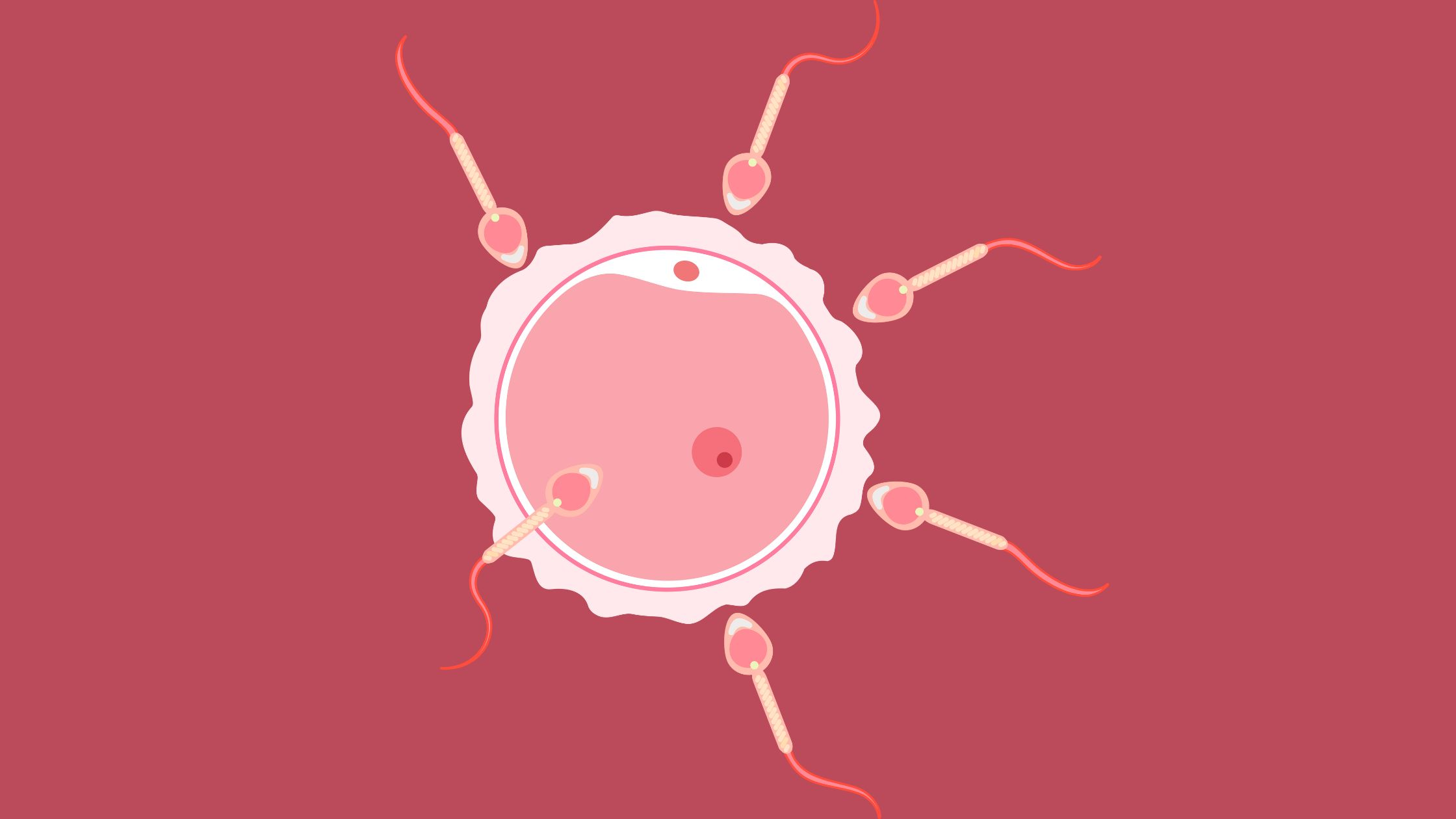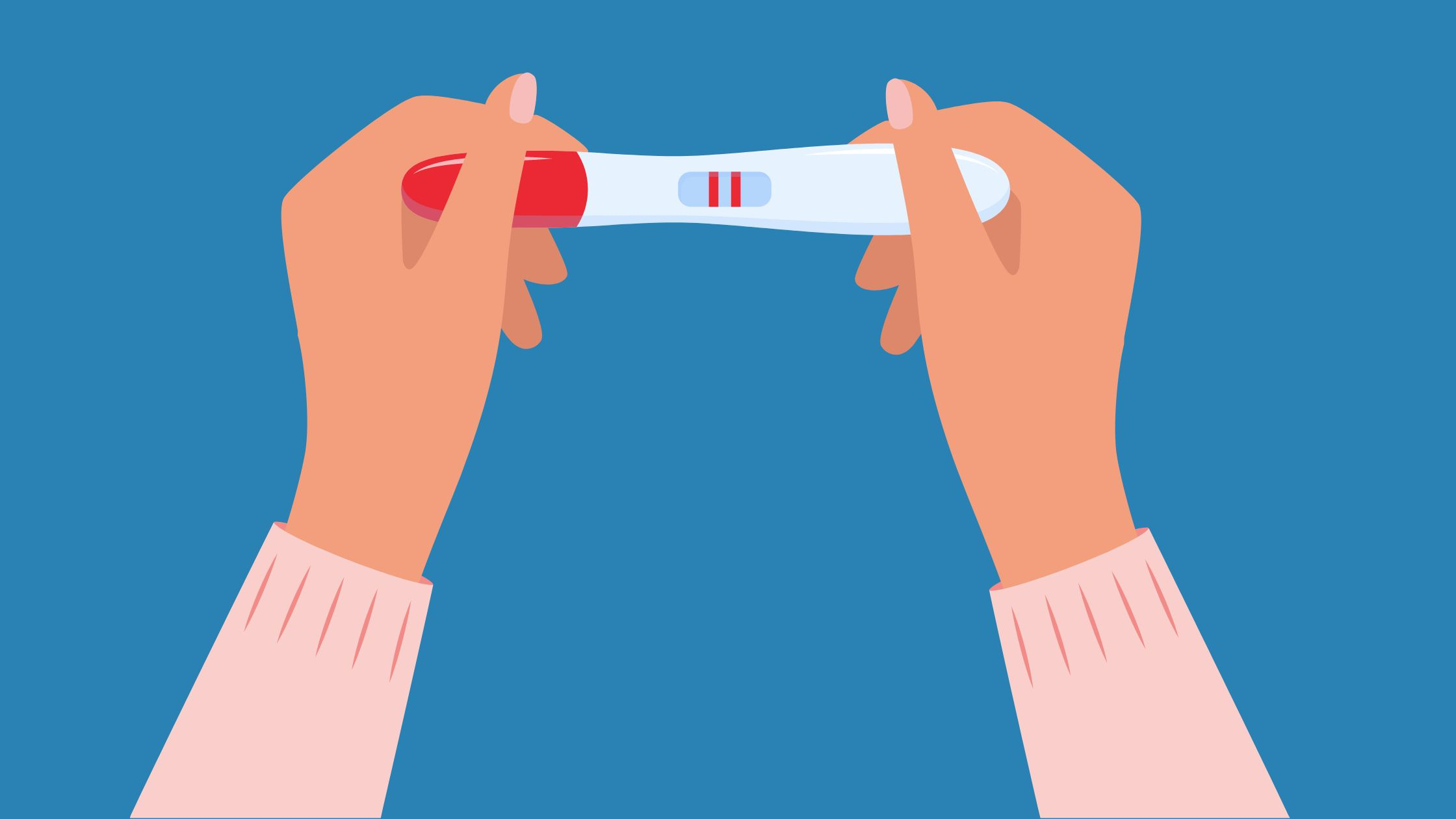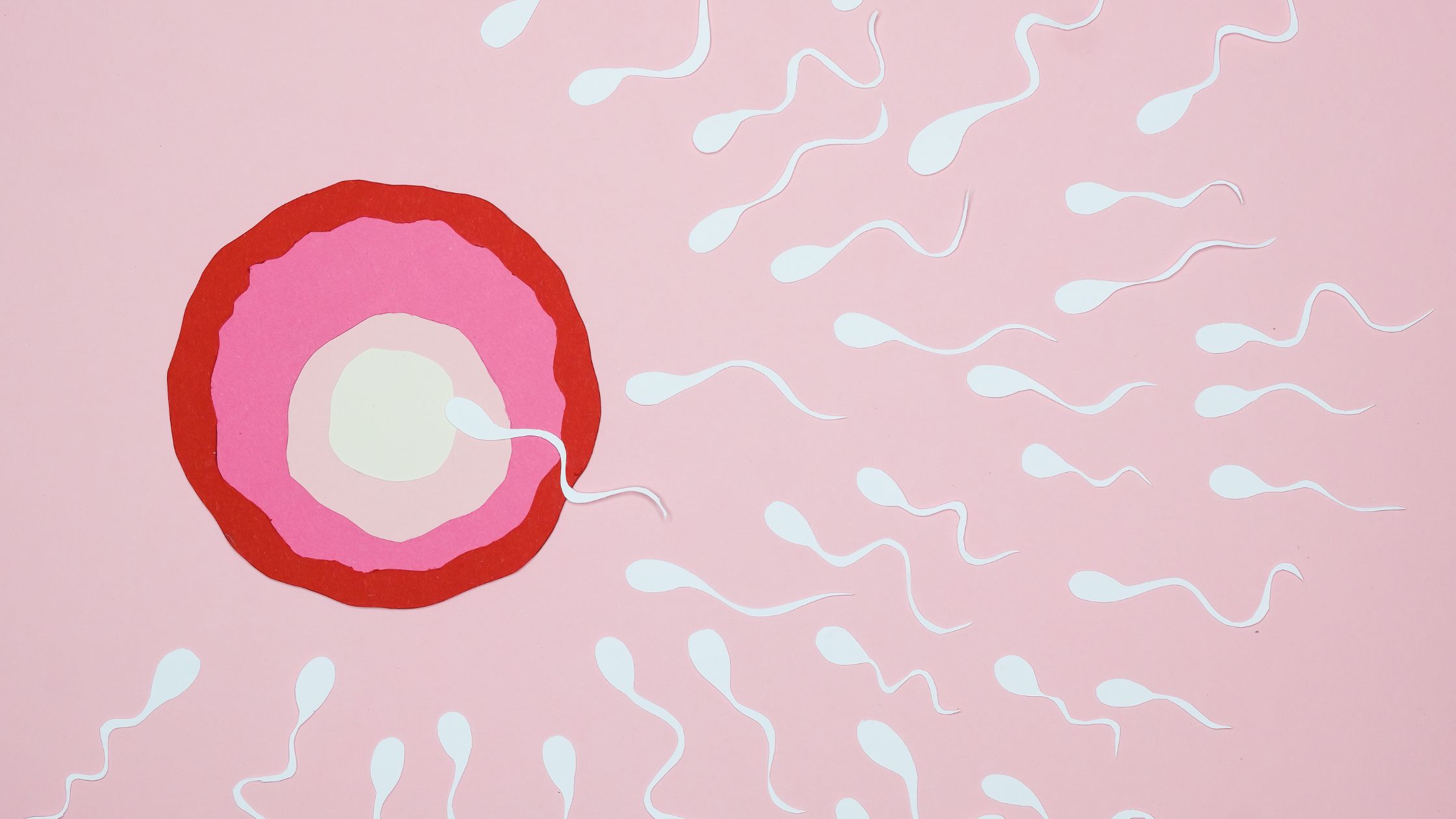You’ve just passed ovulation, and now you’re submerged into the emotional whirlwind known as the TWW (two-week wait).
Many women find themselves hovering between hope and uncertainty, asking questions like: “Is it too soon for a pregnancy test?” or “What symptoms should I be on the lookout for at 2 DPO?”
Early pregnancy symptoms after ovulation can be similar to those of an approaching period, but knowing what to expect can make the TWW feel less daunting.
Fortunately, we’re diving deep into that today. Drawing from extensive research, this piece will guide you through the journey of the early days past ovulation.
Can You Feel Pregnant 2 Days After Ovulation (DPO)?
While the body begins its intricate processes almost immediately after ovulation, it is rare to feel pregnant as early as 2 DPO. At 2 (days past ovulation) DPO, most women are unlikely to experience any distinct symptoms different from those of a typical day.
This is because implantation (where the fertilized egg attaches to the uterine lining) typically happens between 6 to 12 days post-ovulation.
Despite the absence of obvious symptoms, numerous processes and changes are happening within the body. Post-ovulation hormonal shifts are responsible for subtle changes that might not be noticeable immediately.
Complicating matters further is that symptoms at 2 DPO can resemble those typical post-ovulation symptoms experienced during the menstrual cycle.
What Happens 2 Days Past Ovulation?
At 2 DPO, a lot of action is happening inside you.
You are in the luteal phase of the menstrual cycle, typically lasting 10 to 16 days. This phase follows ovulation, during which the follicle that released an egg transforms into the corpus luteum.
The main role of the corpus luteum is to produce essential hormones, primarily progesterone and, to a lesser extent, estrogen. These hormones help sustain the thickened endometrial lining of the uterus in anticipation of the possible implantation of a fertilized egg.
Now, depending on your menstrual cycle and recent sexual activity, there are two scenarios:
- An egg was released from the ovaries two days ago. It’s moving down the fallopian tube but doesn’t meet any sperm. Thus, no fertilization occurred.
- On the flip side, that same egg might’ve met some eager sperm, and voila! They clicked. The resulting fertilized egg (a zygote) would go down one of the fallopian tubes toward the uterus. But hold your horses; it doesn’t mean you’re pregnant just yet.
Here’s the lowdown:
Your egg started its trip two days ago.
Note: Sperm can live up to five days inside a woman’s body. So, if you had sex anytime in the five days before ovulation, during, or even the day after, your egg had a solid shot at getting fertilized.
But here’s the catch: your egg had only one day, a mere 24 hours, to make some magic happen. If you started ovulating two days ago, that golden window’s closed.
Now, your egg’s on a mission to the uterus. If it gets the golden ticket (got fertilized), it’ll try to implant in your womb’s wall. Once it’s all settled in, congrats, you’re officially pregnant! Implantation typically occurs 6–12 days post-fertilization.
Your body kicks into gear, producing the tell-tale pregnancy hormone, human chorionic gonadotropin (hCG). This hormone makes pregnancy tests turn positive and might also make you feel queasy, give you tender boobs, and make you super tired.
It’s a whirlwind, right? Imagine you might be crafting a tiny human inside you as we speak!
But, hCG becomes detectable 7-12 days after implantation. This is around 13 DPO, or when a menstrual period is expected. Testing for pregnancy will be more accurate after this period.
When Do Pregnancy Symptoms Begin?

Pregnancy symptoms typically start after implantation has taken place. Implantation happens when a fertilized egg attaches itself to the lining of the uterus.
Understanding the timeline and physiological processes can provide context to the question: When do pregnancy symptoms begin?
Ovulation and Fertilization: Ovulation is when the ovary releases an egg and it travels down the fallopian tube. If sperm is present, fertilization may occur, but this doesn’t mean pregnancy has started.
Implantation: After the egg is fertilized, it starts its journey to the uterus, where it must implant itself to establish a pregnancy. This implantation typically occurs between 6-12 DPO.
Hormonal Changes: The body produces human chorionic gonadotropin (hCG) after implantation. This hormone is what pregnancy tests detect, and it’s responsible for many early pregnancy symptoms. Before implantation, hCG levels are virtually nonexistent.
Given this timeline, here are some points to consider:
Physical Sensations: At 2 DPO, the fertilized egg is still in the fallopian tube and has not yet been implanted in the uterus. The body hasn’t started producing hCG, so pregnancy symptoms attributable to this hormone wouldn’t be present.
Progesterone: After ovulation, the level of progesterone in the body rise. This hormone is responsible for symptoms that women might mistakenly attribute to early pregnancy, such as breast tenderness, bloating, and mood swings.
Implantation: Some indicators of implantation include spotting from implantation and cramps associated with it.
Early Pregnancy Symptoms at 2 DPO

Wondering if you can have symptoms at 2 DPO?
It’s entirely possible to experience them. However, distinguishing these symptoms can be challenging. They can often be confused with the typical post-ovulation symptoms.
Each sign can also indicate that you are in the luteal phase, during which your body increases progesterone levels to thicken the uterine lining.
You may notice these symptoms because you’re particularly attuned to your body’s changes at this time.
If you’re keenly observing for early 2 DPO symptoms, here are the most common ones:
1. Fatigue
After ovulation, the hormone progesterone rises in the body. Progesterone has a sedative effect, making some women feel tired. However, this increase in progesterone is a normal part of the menstrual cycle and happens whether a woman is pregnant or not.
2. Bloating
One of the effects of increased progesterone is that it can slow the digestive process. This can lead to gas, bloating, and constipation.
Digestive problems might lead to abdominal discomfort or cramps at 2 DPO.
Moreover, ovulation itself can result in bloating.
3. Mood Swings
Progesterone can affect neurotransmitters in the brain, such as serotonin, influencing mood. The shift in hormonal balance post-ovulation can lead to mood swings, whether or not you are pregnant.
4. Back Pain
Cramping and back pain is another common early pregnancy symptoms in women.
5. Breast Tenderness
Breast tenderness is caused by a surge in pregnancy hormones and enhanced blood circulation.
While these symptoms are commonly associated with pregnancy, they can also indicate an approaching menstrual period.
Can Implantation Happen 2 Days Past Ovulation?
Implantation is the process by which a fertilized egg attaches itself to the lining of the uterus.
While egg fertilization can occur soon after ovulation, the fertilized egg (zygote) still needs time to travel down the fallopian tube and into the uterus.
Once in the uterus, it becomes a blastocyst and begins implantation.
Typically, implantation occurs between 6-12 DPO. It doesn’t happen immediately after fertilization due to the time required for the zygote to journey and for the uterus to be in the right receptive state to accept the blastocyst.
Implanting too early or too late can affect the chances of a successful pregnancy. Implantation at 2 DPO would be very early and is not considered typical.
Why Am I Cramping 2 Days After Ovulation?
Getting a bit anxious is natural if you’re feeling cramps at 2 DPO (or anytime, really) and you’re TTC. However, cramping at 2 DPO doesn’t definitively indicate pregnancy and is not an immediate cause for alarm either.
Approximately a week later, you may observe mild cramping and potential spotting, which could indicate the embryo implanting into the uterine lining. However, sensations of this nature before 3 DPO are exceedingly uncommon.
In all likelihood, cramps felt at 2 DPO are more indicative of ovulatory processes rather than early pregnancy.
Is 2 DPO Too Early for a Positive Pregnancy Test?

Yes, 2 DPO is too early for a positive pregnancy test.
Typically, implantation occurs between 6-12 DPO. The pregnancy hormone (or hCG) levels rise only after implantation, which is what pregnancy tests detect.
Testing at 2 DPO would likely result in a negative result, even if conception has occurred.
It’s advisable to wait until closer to the expected period date to take a pregnancy test for more accurate results.
When Is the Best Time to Take a Pregnancy Test?
For the most accurate reading, taking a home pregnancy test between 12 and 14 days past ovulation or at least on the day you expect your period is best.
If you opt for a blood test to measure hCG levels, aim for about 11 days after conception, which falls between 6 and 8 DPO.
Patience is key; waiting until your expected period date or after ensures that the hCG levels will be sufficiently high for detection if you are pregnant.
Testing prematurely might give you a false negative. To maximize accuracy, take the test in the early morning when your urine is most concentrated.
Takeaway
- After ovulation, women enter the Two-Week Wait (TWW) and often think about early pregnancy symptoms and the optimal time for a pregnancy test.
- It’s uncommon to feel pregnant at 2 DPO.
- Implantation usually occurs 6 to 12 days post-ovulation, accompanied by hormonal shifts.
- At 2 DPO, women are in the luteal phase of their menstrual cycle.
- The corpus luteum produces hormones, and fertilization might or might not have occurred depending on circumstances.
- Symptoms at 2 DPO can resemble regular post-ovulation symptoms, including morning sickness, fatigue, and bloating.
- These symptoms can also be signs of an impending menstrual period.
- Testing for pregnancy at 2 DPO is premature and likely negative. For accurate results, take a pregnancy test closer to the expected period date, between 12 and 14 days post-ovulation.
- Recognizing pregnancy as early as 2 DPO is rare, and understanding the post-ovulation timeline is crucial to managing expectations.
References
Wilcox AJ, Baird DD, Weinberg CR. Time of implantation of the conceptus and loss of pregnancy. N Engl J Med. 1999 Jun 10;340(23):1796-9. doi: 10.1056/NEJM199906103402304. PMID: 10362823.Stanford JB, White GL, Hatasaka H. Timing intercourse to achieve pregnancy: current evidence. Obstet Gynecol. 2002 Dec;100(6):1333-41. doi: 10.1016/s0029-7844(02)02382-7. PMID: 12468181.Prior JC. Perimenopause: the complex endocrinology of the menopausal transition. Endocr Rev. 1998 Aug;19(4):397-428. doi: 10.1210/edrv.19.4.0341. PMID: 9715373.Hillier SG. Current concepts of the roles of follicle stimulating hormone and luteinizing hormone in folliculogenesis. Hum Reprod. 1994 Feb;9(2):188-91. doi: 10.1093/oxfordjournals.humrep.a138480. PMID: 8027271.Lessey BA, Kim JJ.Endometrial receptivity in the eutopic endometrium of women with endometriosis is affected, and let me show you why. Fertil Steril. 2017 Jul;108(1):19-27. doi: 10.1016/j.fertnstert.2017.05.031. Epub 2017 Jun 14. PMID: 28602477; PMCID: PMC5629018.Croxatto HB. Physiology of gamete and embryo transport through the fallopian tube. Reprod Biomed Online. 2002 Mar-Apr;4(2):160-9. doi: 10.1016/s1472-6483(10)61935-9. PMID: 12470580.Croxatto HB. Physiology of gamete and embryo transport through the fallopian tube. Reprod Biomed Online. 2002 Mar-Apr;4(2):160-9. doi: 10.1016/s1472-6483(10)61935-9. PMID: 12470580.Norwitz ER, Schust DJ, Fisher SJ. Implantation and the survival of early pregnancy. N Engl J Med. 2001 Nov 8;345(19):1400-8. doi: 10.1056/NEJMra000763. PMID: 11794174.Cole LA. New discoveries on the biology and detection of human chorionic gonadotropin. Reprod Biol Endocrinol. 2009 Jan 26;7:8. doi: 10.1186/1477-7827-7-8. PMID: 19171054; PMCID: PMC2649930.Lenton EA, Neal LM, Sulaiman R. Plasma concentrations of human chorionic gonadotropin from the time of implantation until the second week of pregnancy. Fertil Steril. 1982 Jun;37(6):773-8. doi: 10.1016/s0015-0282(16)46337-5. PMID: 7115557.Montplaisir J, Lorrain J, Denesle R, Petit D. Sleep in menopause: differential effects of two forms of hormone replacement therapy. Menopause. 2001 Jan-Feb;8(1):10-6. doi: 10.1097/00042192-200101000-00004. PMID: 11201509.Heitkemper MM, Chang L. Do fluctuations in ovarian hormones affect gastrointestinal symptoms in women with irritable bowel syndrome? Gend Med. 2009;6 Suppl 2(Suppl 2):152-67. doi: 10.1016/j.genm.2009.03.004. PMID: 19406367; PMCID: PMC3322543.Pluchino N, Cubeddu A, Begliuomini S, Merlini S, Giannini A, Bucci F, Casarosa E, Luisi M, Cela V, Genazzani AR. Daily variation of brain-derived neurotrophic factor and cortisol in women with normal menstrual cycles, undergoing oral contraception and in postmenopause. Hum Reprod. 2009 Sep;24(9):2303-9. doi: 10.1093/humrep/dep119. Epub 2009 Jun 2. PMID: 19491202.Carvalho MECC, Lima LC, de Lira Terceiro CA, Pinto DRL, Silva MN, Cozer GA, Couceiro TCM. Lombalgia na gestação [Low back pain during pregnancy]. Rev Bras Anestesiol. 2017 May-Jun;67(3):266-270. Portuguese. doi: 10.1016/j.bjan.2016.03.002. Epub 2016 May 21. PMID: 27220735.Baerwald AR, Adams GP, Pierson RA. A new model for ovarian follicular development during the human menstrual cycle. Fertil Steril. 2003 Jul;80(1):116-22. doi: 10.1016/s0015-0282(03)00544-2. PMID: 12849812.Gnoth C, Johnson S. Strips of Hope: Accuracy of Home Pregnancy Tests and New Developments. Geburtshilfe Frauenheilkd. 2014 Jul;74(7):661-669. doi: 10.1055/s-0034-1368589. PMID: 25100881; PMCID: PMC4119102.Korevaar TI, Steegers EA, de Rijke YB, Schalekamp-Timmermans S, Visser WE, Hofman A, Jaddoe VW, Tiemeier H, Visser TJ, Medici M, Peeters RP. Reference ranges and determinants of total hCG levels during pregnancy: the Generation R Study. Eur J Epidemiol. 2015 Sep;30(9):1057-66. doi: 10.1007/s10654-015-0039-0. Epub 2015 May 12. PMID: 25963653; PMCID: PMC4584104.
